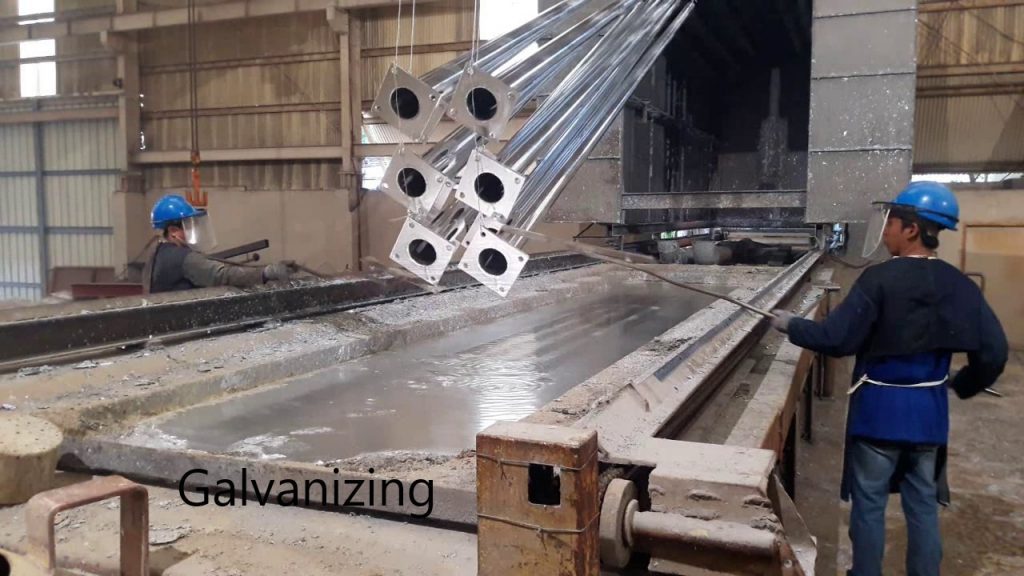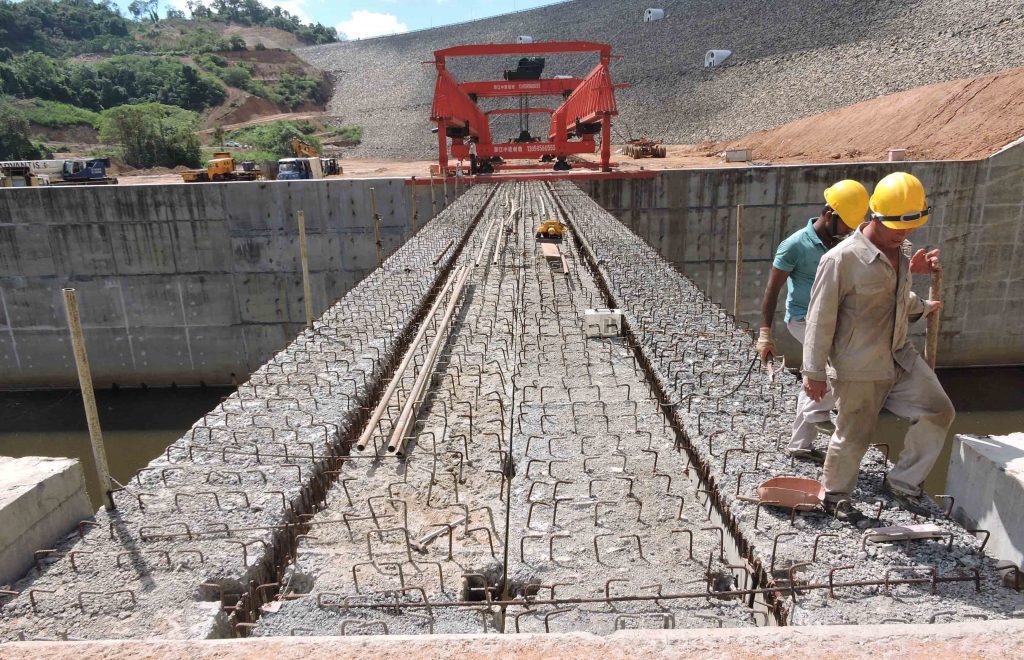Rock Quality Designation is also known as RQD is an indicator of the quality of the rock. Foundation capacities highly depend on the RQD value and core recovery values.
Especially, when design pile foundations where very high concentrated loads are applied at a point, it is required to assess the quality of the rock. Based on the assessment of the condition of the rock, skin friction, and end bearing of the rock are calculated. These are made based on the test such as uniaxial compressive strength tests and based on the rock quality parameters such as RQD and Core Recovery.
Further, the socketing length of the rock is also based not only on the applied load but also on the quality of the rock.
Higher the RQD, the higher the quality of the rock. let see the following table to get an idea about the importance of knowing the technical background about RQD.
| RQD | Rock Quality |
| < 25% | Very Poor |
| 25 – 50 % | Poor |
| 51 – 75 % | Fair |
| 76 – 90% | Good |
| 91 – 100 % | Excellent |
As it appears in the table, the rock coring that has RQD less than 50% considered poor quality rock. It could be due to the fractures in the rock and the rock quality is more toward the weathered zone.
RQD in the range of 76-100% can be considered as the good quality rock that most suitable for the construction of foundations.
Let’s see a sample of reck that obtained by rock coring in a borehole investigation.
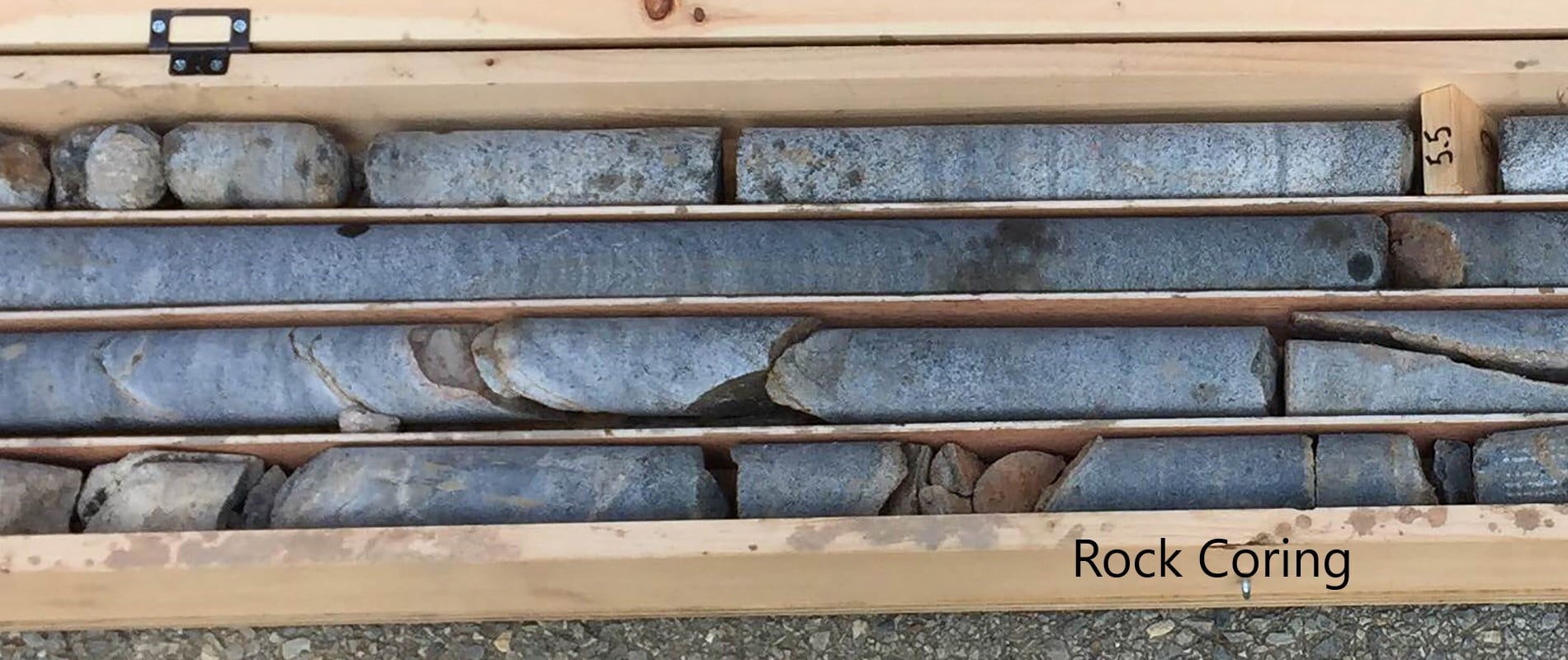
The above figure clearly indicates that the condition of the rock is not consistent. Though it is expected to have a good quality rock, there are crack, discontinues, weathering, etc in the rock.
Therefore, parameters like RQD and Core recovery are important to establish the condition of the rock numerically.
What is RQD
RQD is defined as the sum of the core samples having a length greater than 100mm divided by the total length considered. RQD value is calculated as a percentage value. Therefore, the above ration shall be multiply by 100.
RQD = [ Sum of the core pieces > 100 mm ] / [ Total Core Lengh ] x 100
Let see how it is calculated in practice.
The following figure indicates the details of a sample.
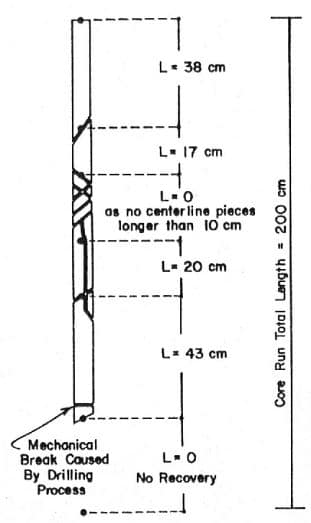
The RQD can be calculated as follows.
RQD = { [ 38 + 17+ 20 + 43 ] / [200 ] } x 100 = 59%
Rock quality can be considered as fair as the RQD of rock is in the range of 51 -75%.
Core Recovery (CR)
Core recovery is also an indication of the condition of the rock. Lesser the core recovery, there is an issue with the quality of the rock.
If the rock is consistent, CR should be 100%. But in practice, it could not be achieved always.
There could be fractures, separations, etc. that affect the length of the rock. As indicated in the above figure, there is not core recovered at the end of the core sample.
Let see how to calculate the CR
CR = { [ Total length of rock recovered ] / [ Total Core Legth] } x 100
The following figure inidcate a details of a core sample.
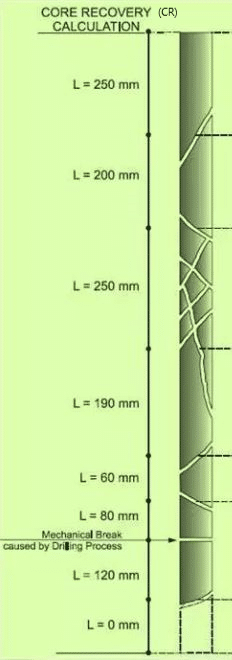
Let’s calculate the CR,
The total length of the sample is 1250mm
CR = { [ 250+ 200 + 250 + 190 + 60 + 80 + 120 ] / [ 1200 ] } x 100 = 92%
Application of RQD and CR
- Pile foundation: Knowing the RQD and CR is a must in pile foundation design. They provide a clear indication of the condition of the rock to be cored to socket the piles. Further, geotechnical design parameters are considered in the pile designs that reflect the RQD and CR.
- Tunnel Design: When tunnels are constructed in the rock and they need to be lined with concrete, the condition of the rock is important to decide on the load to be considered for tunnel lining. Further, even for an unlined tunnel, knowing the quality of the rock provides an indication of whether it stables after excavation or any support is required during the construction. In addition, in the case of weak rock where the grouting is done to stabilize the rock, the extend that is required to continue grouting and quantity of grout requirement can predict with these parameters.
- Rock Anchoring: Rock anchors are constructed to stabilize the gravity structure, retaining structure, avoiding uplift movement, etc. Depending on the design loads and nature of the rock, rock anchors are continued mobilizing the full length of the bar (12m) after allowing anchorages to the structure. If there are cracks or cavities in the rock, the grout injected in the drill holes will not remain within the hole. It could reduce the load-carrying capacity. Further, having cracks in the rock, also reduce the load-carrying capacity.
- Dam Design: Dams are constructed to retain the water. Movement of the water across the dam centerline needs to be avoided. That is water seepages through the dam body and dam foundation should minimize. Mostly the dame foundations are constructed on the solid rock. Rock is not an impermeable material. There are cracks, cavities, weathered zones, weak zones, etc. This information can be obtained through the borehole investigation. The parameters like core recovery provide a clear understanding of the condition of the rock and it is an indication for deciding the extent of grouting etc. Further, RQD could be used as an indication to decide on rock quality.

